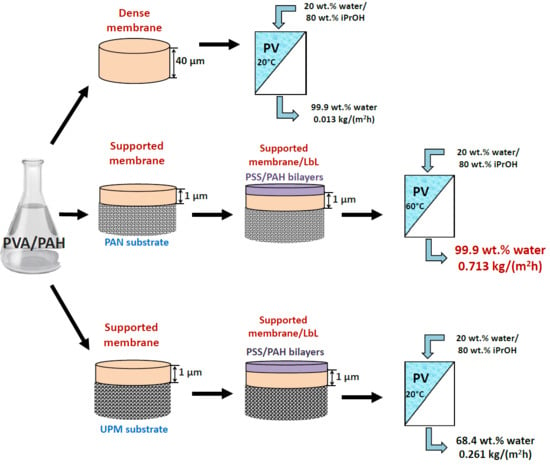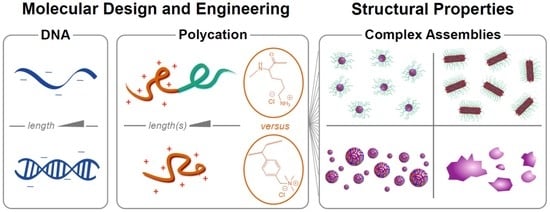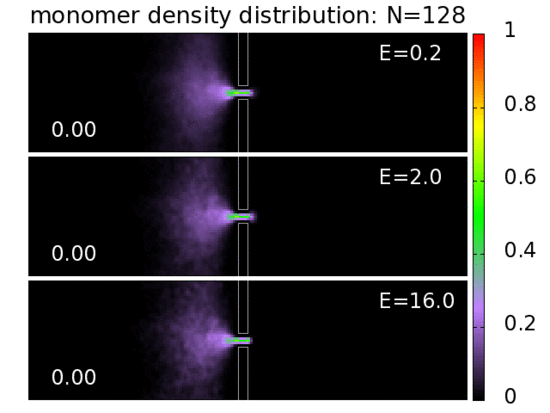Polyelectrolytes
A project collection of Polymers (ISSN 2073-4360). This project collection belongs to the section "Polymer Chemistry".
Papers displayed on this page all arise from the same project. Editorial decisions were made independently of project staff and handled by the Editor-in-Chief or qualified Editorial Board members.
Viewed by 235801Editor
Interests: structure, dynamics and charge in complex polymer and polyelectrolytes systems magnetic resonance (NMR & EPR) including methods developments
Special Issues, Collections and Topics in MDPI journals
Project Overview
Dear Colleagues,
Polyelectrolytes are the subject of very active research and development in fields such as chemistry, physics, biology, medicine, materials science, food science, and nanotechnology. Polyelectrolyte properties are intrinsic, not only to a multitude of single macromolecules, but also to their organized structures and molecular assemblies. Biopolymers, such as proteins, DNA, and polysaccharides, which are available in almost unlimited quantity in nature, as well as many synthetic polymers, which are industrially produced on a large scale, belong to this fascinating class of polymers. The importance of polyelectrolyte research is best documented by the exponential annual increase of scientific publications dedicated to polyelectrolytes.
This Topical Collection of Polymers intends to serve as an interdisciplinary platform addressing all polyelectrolyte related aspects. Overcoming the hurdles of single research disciplines will be the major goal of this platform. Original articles reporting recent progress on polyelectrolyte related research from different disciplines and review papers highlighting in particular interdisciplinary aspects are both invited. Launched in 2015, this Topical Collection remains open for submissions. We are looking forward to receiving your paper at any time.
Dr. Christine Wandrey
Prof. Dr. Ruth Freitag
Dr. Ulrich Scheler
Collection Editors
Manuscript Submission Information
Manuscripts should be submitted online at www.mdpi.com by registering and logging in to this website. Once you are registered, click here to go to the submission form. Manuscripts can be submitted until the deadline. All submissions that pass pre-check are peer-reviewed. Accepted papers will be published continuously in the journal (as soon as accepted) and will be listed together on the collection website. Research articles, review articles as well as short communications are invited. For planned papers, a title and short abstract (about 100 words) can be sent to the Editorial Office for announcement on this website.
Submitted manuscripts should not have been published previously, nor be under consideration for publication elsewhere (except conference proceedings papers). All manuscripts are thoroughly refereed through a single-blind peer-review process. A guide for authors and other relevant information for submission of manuscripts is available on the Instructions for Authors page. Polymers is an international peer-reviewed open access semimonthly journal published by MDPI.
Please visit the Instructions for Authors page before submitting a manuscript. The Article Processing Charge (APC) for publication in this open access journal is 2700 CHF (Swiss Francs). Submitted papers should be well formatted and use good English. Authors may use MDPI's English editing service prior to publication or during author revisions.
Keywords
- polyelectrolyte synthesis, modification and functionalization
- advanced analysis and characterization of polyelectrolytes and their assemblies
- thermodynamics, solubility, and phase diagrams
- polyelectrolytes in solution and at interfaces
- theory and simulations
- polyelectrolyte phenomena
- assemblies and multilayers
- complexes and particles
- conformation and counterions: theory vs. experiment
- natural polyelectrolytes
- synthetic polyelectrolytes
- hybrid materials
- polyelectrolytes in food and cosmetics
- polyelectrolytes for biomaterials and pharmaceuticals
- polyelectrolytes for industrial and environmental processes
Related Special Issues
- Polyelectrolyte Complexes in Polymer Science and Technology in Polymers (4 articles - displayed below)
- Polyelectrolytes and Polyelectrolyte Complexes-in Memory of Prof. Paul Dubin in Polymers (19 articles - displayed below)
- Polyelectrolytes 2014 in Polymers (12 articles - displayed below)
- Polyelectrolytes in Polymers (8 articles - displayed below)
- Polymers for Aqueous Media in Polymers (10 articles - displayed below)
- Selected Papers from ECIS 2018 in Polymers (7 articles - displayed below)

































































































